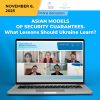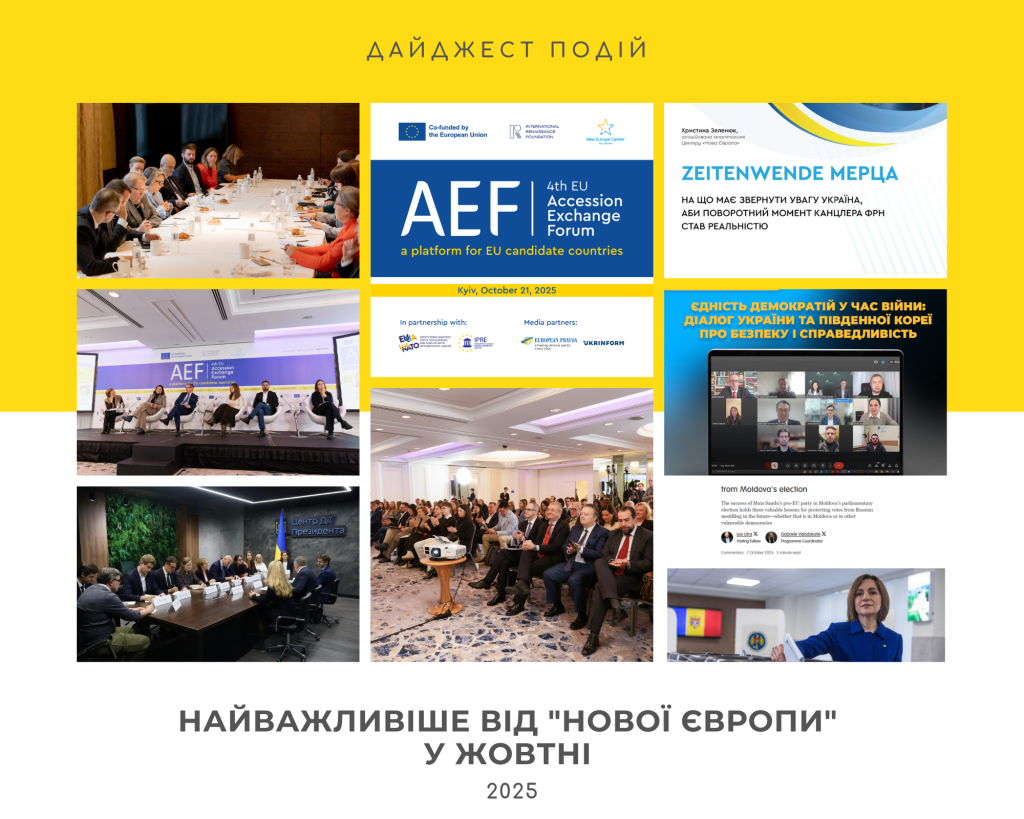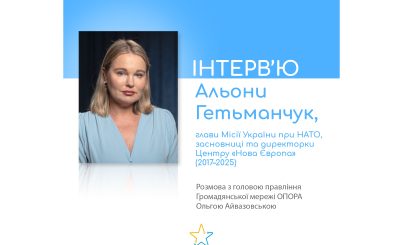PDF-version of the research is available here.
Volodymyr Zelensky’s coming to power has raised expectations regarding the settlement of the conflict over Donbas among many Ukrainians, as well as foreign observers. A poll conducted by the Rating Sociological Group showed that 24% of Ukrainians believe that it would take less than one year to establish peace in Donbas, and almost 20% expect it within the next one or two years.(1) The objective of this study was to analyze the scenarios of the development of the situation around Donbas in the coming year. This period of time was also chosen given that the Ukrainian authorities had set such a deadline before themselves and Russia to resolve the conflict.
Overall, analysts at the New Europe Center have analyzed six scenarios and two sub-scenarios (variants of Ukraine’s decisions that may occur under certain scenarios or lead to a certain scenario) regarding the settlement of the conflict in the East of Ukraine, inspired and supported by Russia: the status quo; freezing of the conflict; reintegration of Donbas on the basis of decentralization; autonomy / special status for Donbas (federalization); Ukraine’s military operation to return the occupied territories; Russia’s offensive (full-scale invasion in Ukraine); Ukraine’s withdrawal from the Minsk negotiations; the introduction of a peacekeeping mission in Donbas.
To learn more about the methodology and the analysis of each scenario, see the New Europe Center’s website in Ukrainian. We present in English the main observations and recommendations based on the analyzed scenarios. We also bring to your attention the rating of probability and desirability of scenarios based on 65 estimates provided by Ukrainian and foreign experts.
PRELIMINARY CONCLUSIONS AND RECOMMENDATIONS
- The status quoappears to be the most realistic scenario in the near term, as the parties to the conflict are not ready to make substantial concessions. In this case, the freezing of the conflict(termination of hostilities with the continuation of the negotiation process) is a probable scenario; however, it would require a number of prerequisites, possibly some concessions on the part of Ukraine. It is also important to note that a significant part of the interviewed experts specializing in Russia excluded any interest on the part of Vladimir Putin in freezing the conflict following the Transnistrian example. See detailed results of the poll below.
- Should we expect any changes in Putin’s policies?An analysis conducted by the New Europe Center revealed no sign of Russian authorities’ willingness to resolve the conflict in Donbas. Moreover, the Russian leadership is not interested in freezing the conflict, since such a scenario involves putting significant costs to Russia’s shoulders, which would not meet Moscow’s goals. Moscow’s objective is to maintain the tensions in Ukraine, and the low-intensity conflict makes it possible to keep the issue of war on the political agenda of the state. Once the conflict is frozen, Ukraine would be able to focus more on internal affairs and reforms, which is not in Russia’s interests. The more Ukraine talks about compromises or the importance of ending the war, the more it reveals its vulnerability to the agenda imposed by Russia. This will lead not to the resolution of the conflict or its freezing, but to new ultimatums set by Moscow. The only scenario that suits Russia is reintegration based on the actual autonomy of Donbas. At present, Moscow is building its negotiation tactics around exposing Ukraine’s inflexibility.
- Freezing through peacekeepers.Based on the analysis, freezing the conflict through the introduction of a peacekeeping mission seems to be one of the most optimal scenarios for the short and medium term (in particular, for Vladimir Putin’s term in power in Russia,). Introducing the peacekeepers is one of the top 3 most desirable scenarios and freezing of the conflict is one of the top 3 most desirable and probable ones (based on a poll conducted among 65 foreign and Ukrainian experts; see complete results of the poll in the last section of this publication). Moreover, this scenario is considered to be the most popular settlement option among the population of Ukraine (34% of Ukrainians support this option, and 39% of the Servant of the People electorate).
- The least desirable scenario.There is reason to believe that for the Russian Federation, “special status” is only a mask for “federalization,” while Ukraine sees it within the conceptual framework of “decentralization.” It would be worthwhile to look more seriously into such option as an international transitional administration. It is important to note that according to the poll among Ukrainian and foreign conflict resolution researchers, the scenario of autonomy / special status (federalization) is considered the second least desirable for Ukraine after the military offensive. The special status (federalization) was in fact equated with Russia’s military offensive.
- Withdrawal from the Minsk format would be a win for Moscow.Withdrawal from the Minsk format is the scenario that would benefit Russia most. The Ukrainian side should shift its focus in communication from “withdrawing from the Minsk format” to “modernizing the Minsk format.” Such an approach, unlike the withdrawal, is also supported by Western partners (Chancellor Merkel specifically discussed this issue with Putin during her last visit to Moscow). Accordingly, Ukraine’s strategy could now be reduced to the following question, both in internal and external context: “either the modernization of the Minsk format, or the impasse.” However, modernization also should not harm Ukraine’s national interests, as there is currently no reason to expect that Minsk-3 would be better than previous agreements.
- 6. Budget load in any scenario.Any scenario involves a significant burden on Ukraine’s budget, whether it concerns freezing, maintaining the status quo, military operations (funds should be used for military needs), or reintegration (funds should be used to rebuild the war-ravaged region and also for defense purposes). Defense spending due to the threats posed by Russia cannot be reduced even after the settlement of the conflict in Donbas (which is in any case unlikely in the short term).
- 7. Expectation management, setting realistic goals.For those in power, it is important to manage expectations on a constant basis: avoid declarations regarding the settlement that would raise public expectations within Ukraine, since it also affects Russia’s approaches (the principle: “you need it more; these are your promises to your voters, therefore you should make concessions”). It will be a lengthy diplomatic process. At the moment, there are minimal prerequisites for the conflict to transit into the “frozen” stage (the “status quo minus hostilities” formula), not to mention any full-fledged sustainable settlement. Today, the wait and see approach looks like an optimal realistic model that allows to expect better international and domestic conditions for a settlement in favor of Ukraine. At the same time, the “people first” strategy should be implemented in parallel, taking steps related to the humanitarian sphere, confidence building measures. As for the entire Ukraine, intensive reforms and improvements in the socio-economic sphere should continue to be implemented. The issue of defense must be in focus, but it cannot affect the priority of transformation in civilian spheres (security first but not security only).
- 8. A culture of peace is more than an armistice, demilitarization, amnesty, elections, and border control.Restoring peace is not simply about achieving a ceasefire or a truce; it requires much more time and measures. During the war years, little measures have been taken to foster the future social harmony. There is a simplified understanding of the situation: they say, the withdrawal of Russian military equipment and the cessation of Russian propaganda would be sufficient. There is not always the realization that a new “generation of war” is actually forming during the war.
EXPERT POLL
65 experts (38 Ukrainian and 27 foreign) participated in the poll. It was conducted in February-March 2020. The experts had to assess the probability and desirability of each of the possible scenarios for the development of the situation around the settlement of the conflict in Donbas on a ten-point scale (the higher the score, the more likely or desirable the scenario). We would like to bring to your attention separately the estimates of Ukrainian and foreign experts, as well as the average of the total estimates of both Ukrainian and foreign experts. Script timeframe is one year.
The main findings of the poll:
- The status quo (i.e. the immutability of the situation) is identified by experts as the most likely scenario.It does not foresee any shift in the negotiations. In this regard, Ukrainian and foreign experts are in solidarity. During the interviews, the analysts pointed out that it is the Russian leadership that is not interested in any changes. Any concessions on the part of Russia would have crossed out all of Moscow’s previous six years spent on exhausting Ukraine through the conflict.
- The freezing of the conflict ranks second in the probability rating (in this case, Ukrainian and foreign experts also share the same opinion). Although certain analysts polled by the New Europe Center have stressed that Russia is not even interested in freezing the conflict (following the Transnistrian scenario). The only option that would suit Moscow is a special status for the occupied regions, which implies their autonomy within Ukraine.
- The rest of the scenarios are significantly behind the first two options, and the estimates of their probability do not exceed the average of 5 points. Although there are differences of opinion between foreign and Ukrainian experts regarding the probability of these scenarios (except for the status quo and the freezing of the conflict). For instance, Ukrainian experts placed Russia’s offensive third in the probability rating, while their foreign counterparts gave the third position to Ukraine’s withdrawal from the Minsk process. At the same time, foreign experts do not actually believe in the probability of a Russian offensive in the near future (a foreign experts’ probability estimate is 2.43 points against the Ukrainian assessment of 4.29 points).
- The introduction of a full-fledged peacekeeping mandate with access to the entire territory of the occupied areas is considered by both groups of experts to be the most desirable scenario. Ukrainians and foreign analysts also showed solidarity I the opinion that the second and third most desirable scenarios would be the reintegration of Donbas on the basis of decentralization and freezing of the conflict. As we see, there is only one scenario among the three leaders in terms of both desirability and probability, and it is the freezing of the conflict.
- The special status is actually equated with Russia’s military offensive. In the desirability rating of the scenarios, the special status (autonomization) of Donbas has been evaluated with the same low score as the Russian full-scale offensive. The officials involved in the negotiation process should consider such a coincidence in the estimates. According to the poll among Ukrainian experts, the desirability of special status and Russian offensive was estimated at 1.58 and 1.00 points, respectively. Foreign experts estimated the desirability of special status at 2.39 points, and the Russian offensive at 1.04 points.
- There is only one step between decentralization and special status.Foreign analysts also provided their specific comments on the estimates. For example, they noted that while defining settlement through decentralization as the second most desirable scenario, they were aware that the title “decentralization” would actually conceal virtual “autonomy” for the occupied territories.
- Ukraine’s military operation to restore sovereignty and territorial integrity was assessed as the least likely scenario. There is solidarity between Ukrainian and foreign experts on this issue. However, there are different opinions regarding the desirability of such development. For instance, the desirability of this forceful scenario was estimated at 3.21 points in Ukraine, and foreign experts set twice lower estimate, 1.64.
Overall results
| PROBABILITY | Scenario | Rating |
| 1 | Status quo | 7.77 |
| 2 | Freezing of the conflict | 5.64 |
| 3 | Ukraine’s withdrawal from the Minsk Agreements | 3.85 |
| 4 | Autonomization (special status) | 3.80 |
| 5 | Reintegration of Donbas on the basis of decentralization | 3.73 |
| 6 | Russia’s offensive | 3.50 |
| 7 | Introduction of a peacekeeping mission | 3.27 |
| 8 | Ukraine’s military operation | 1.95 |
| DESIRABILITY | Scenario | Rating |
| 1 | Introduction of a peacekeeping mission | 8.21 |
| 2 | Reintegration of Donbas on the basis of decentralization | 6.67 |
| 3 | Freezing of the conflict | 5.53 |
| 4 | Ukraine’s withdrawal from the Minsk Agreements | 4.23 |
| 5 | Status quo | 4.09 |
| 6 | Ukraine’s military operation | 2.55 |
| 7 | Autonomization (special status) | 1.92 |
| 8 | Russia’s offensive | 1.02 |
Estimates of Ukrainian experts
| PROBABILITY | Scenario | Rating |
| 1. | Status quo | 7.63 |
| 2. | Freezing of the conflict | 5.29 |
| 3. | Russia’s offensive | 4.29 |
| 4. | Reintegration of Donbas on the basis of decentralization | 3.89 |
| 5. | Autonomization (special status) | 3.76 |
| 6. | Ukraine’s withdrawal from the Minsk Agreements | 3.55 |
| 7. | Introduction of a peacekeeping mission | 3.03 |
| 8. | Ukraine’s military operation | 2,03 |
| DESIRABILITY | Scenario | Rating |
| 1. | Introduction of a peacekeeping mission | 7.89 |
| 2. | Reintegration of Donbas on the basis of decentralization | 5.89 |
| 3. | Freezing of the conflict | 5.87 |
| 4. | Ukraine’s withdrawal from the Minsk Agreements | 5.45 |
| 5. | Status quo | 4.61 |
| 6. | Ukraine’s military operation | 3.21 |
| 7. | Autonomization (special status) | 1.58 |
| 8. | Russia’s offensive | 1.00 |
Estimates of foreign experts
| PROBABILITY | Scenario | Rating |
| 1. | Status quo | 7.96 |
| 2. | Freezing of the conflict | 6.11 |
| 3. | Ukraine’s withdrawal from the Minsk Agreements | 4.25 |
| 4. | Autonomization (special status) | 3.86 |
| 5. | Introduction of a peacekeeping mission | 3.61 |
| 6. | Reintegration of Donbas on the basis of decentralization | 3.50 |
| 7. | Russia’s offensive | 2.43 |
| 8. | Ukraine’s military operation | 1.86 |
| DESIRABILITY | Scenario | Rating |
| 1. | Introduction of a peacekeeping mission | 8.64 |
| 2. | Reintegration of Donbas on the basis of decentralization | 7.71 |
| 3. | Freezing of the conflict | 5.07 |
| 4. | Status quo | 3.39 |
| 5. | Ukraine’s withdrawal from the Minsk Agreements | 2.57 |
| 6. | Autonomization (special status) | 2.39 |
| 7. | Ukraine’s military operation | 1.64 |
| 8. | Russia’s offensive | 1.04 |
New Europe Center would like to express its gratitude to Ukrainian and foreign experts who participated in our research: Dmytro Shulga, Olena Snigyr, Valeriy Kravchenko, Sergiy Korsunsky, Olexiy Haran, Andriy Veselovsky, Oleksiy Melnyk, James Sherr, Richard Weitz, Tony van der Togt, Roman Waschuk, Christina Gherasimov, Gustav Gressel, Peter Dickinson, Alexander Duleba, Maciej Zaniewicz, Jilge Wilfried, Daisuke Kitade, Wojciech Konończuk, Miriam Kosmehl, Stefan Meister, Andrey Makarychev, Arkady Moshes, Mattia Nelles, Milan Nič, Stanislav Secrieru, Eleonora Tafuro, Daniel Szeligowski, Sergey Utkin, Maxime Audinet, Andras Racz, Hugo Klijn, Bob Deen.








